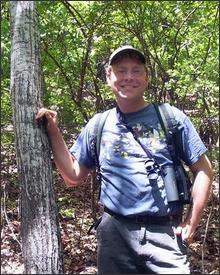 In an amazing discovery in Georgia, a small patch of American Chestnut trees, which were largely wiped out due to a quick-spreading fungus in the early 1900s, has been found alive, healthy, and thriving. This gives new hope to rebuilding the population of the American Chestnut tree which was, at its peak, used in houses, lightpoles, and other infrastructure. Biologists believe that they will be able to study and use these trees to breed what they hope to be stronger American Chestnut trees capable of resisting the fungus which usually destroys them. Full story — detailing biologist’s joy — at Seattle PI:
In an amazing discovery in Georgia, a small patch of American Chestnut trees, which were largely wiped out due to a quick-spreading fungus in the early 1900s, has been found alive, healthy, and thriving. This gives new hope to rebuilding the population of the American Chestnut tree which was, at its peak, used in houses, lightpoles, and other infrastructure. Biologists believe that they will be able to study and use these trees to breed what they hope to be stronger American Chestnut trees capable of resisting the fungus which usually destroys them. Full story — detailing biologist’s joy — at Seattle PI:
"In this photo provided by the Georgia Department of Natural Resources, Nathan Klaus, a senior wildlife biologist with the Georgia Department of Natural Resources, stands beside a rare American chestnut tree he spotted in the F.D. Roosevelt State Park near Warm Springs, Ga., Saturday, April 22, 2006."
Editor’s Note: GNN featured a Chestnut Tree report in1998 about a Virginia effort to breed blight-resistant Chestnuts, written by Nancy Arrington of the Prince William Wildflower Society.



















